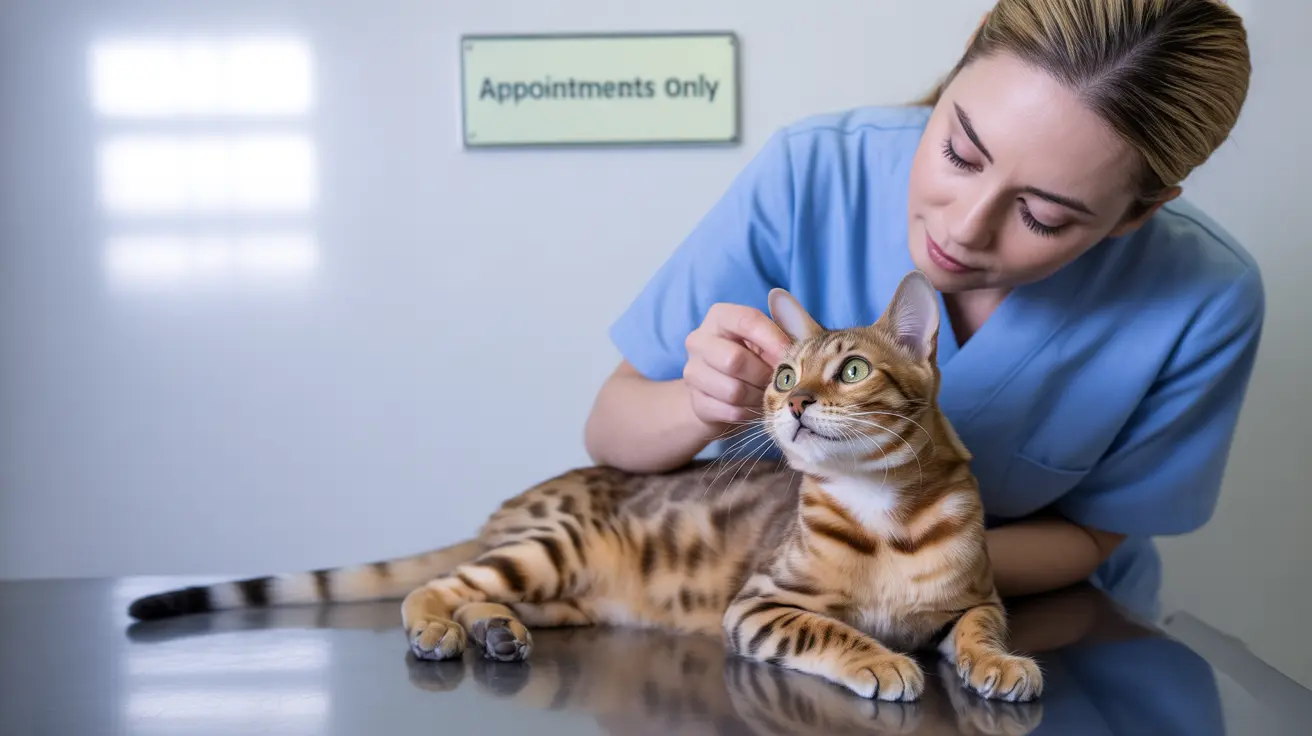When a beloved cat is diagnosed with an ear tumor, one of the first concerns for pet parents is understanding their companion's life expectancy and treatment options. These tumors can range from benign growths to aggressive cancers, and their impact on a cat's lifespan varies significantly depending on several crucial factors.
In this comprehensive guide, we'll explore what you need to know about cat ear tumor life expectancy, including treatment options, survival rates, and factors that influence prognosis. Understanding these aspects can help you make informed decisions about your cat's care and treatment plan.
Types of Ear Tumors and Their Impact on Life Expectancy
Different types of ear tumors carry varying prognoses. Ceruminous gland adenocarcinoma, the most common malignant ear canal tumor in cats, typically offers a more favorable prognosis with a median survival time of up to 49 months with appropriate treatment. In contrast, squamous cell carcinoma (SCC) of the ear canal or middle ear generally has a shorter life expectancy, with median survival times ranging from 85 to 168 days depending on treatment approach.
Benign tumors, including inflammatory polyps and ceruminous gland adenomas, generally have excellent prognoses when treated appropriately, with many cats living normal lifespans after successful removal.
Factors Affecting Survival Rates
Location and Stage of the Tumor
The tumor's location and stage at diagnosis significantly impact life expectancy. Tumors confined to the external ear canal generally have better outcomes than those involving the middle or inner ear. When neurologic signs are present, indicating advanced disease, the median survival time can drop dramatically to as little as 1.5 months.
Treatment Options and Their Success Rates
Surgical intervention remains the gold standard for treatment, with aggressive surgical approaches showing better outcomes than conservative methods. Cats receiving total ear canal ablation and lateral bulla osteotomy often experience longer survival times compared to those receiving more conservative treatments.
Early Detection and Treatment
Early detection plays a crucial role in improving life expectancy. Common warning signs include:
- Persistent ear scratching or head shaking
- Visible masses or ulcers on the ear
- Foul-smelling discharge
- Changes in ear appearance or position
- Signs of pain when touching the ear area
Prompt veterinary attention when these signs appear can lead to earlier diagnosis and potentially better outcomes.
Quality of Life Considerations
Beyond survival statistics, quality of life is a crucial consideration. Many cats can maintain good quality of life with appropriate treatment and management, even if cure isn't possible. Pain management, infection control, and supportive care play vital roles in ensuring comfort throughout treatment.
Frequently Asked Questions
What is the typical life expectancy for a cat diagnosed with an ear tumor, such as ceruminous gland adenocarcinoma or squamous cell carcinoma?
Life expectancy varies significantly based on tumor type. Cats with ceruminous gland adenocarcinoma may live up to 49 months with appropriate treatment, while those with SCC typically survive 3-6 months. Benign tumors, when completely removed, may not impact life expectancy at all.
How do neurologic symptoms affect the prognosis and survival time of cats with malignant ear tumors?
Neurologic symptoms significantly worsen the prognosis, reducing median survival time to approximately 1.5 months. These symptoms often indicate advanced disease or involvement of critical structures.
What are the most effective treatment options for improving survival in cats with ear tumors?
Aggressive surgical removal typically offers the best survival rates, especially for malignant tumors. This may be combined with radiation therapy for incomplete margins or chemotherapy for metastatic disease. Early intervention generally leads to better outcomes.
How does the type and location of a cat's ear tumor influence its expected outcome and risk of recurrence?
External ear tumors generally have better outcomes than those in the middle or inner ear. Malignant tumors have higher recurrence rates, especially with conservative surgery. Location affects surgical accessibility and potential for complete removal.
What signs should I watch for that indicate my cat might have an ear tumor requiring veterinary attention?
Watch for persistent ear infections, visible masses, ear discharge, head shaking, scratching at ears, changes in ear position, or signs of pain when touching the ear area. Any of these symptoms warrant immediate veterinary evaluation.
Conclusion
While a diagnosis of an ear tumor can be frightening, understanding the factors that influence life expectancy can help pet parents make informed decisions about their cat's care. Early detection and appropriate treatment remain key to optimizing outcomes and quality of life for affected cats.






